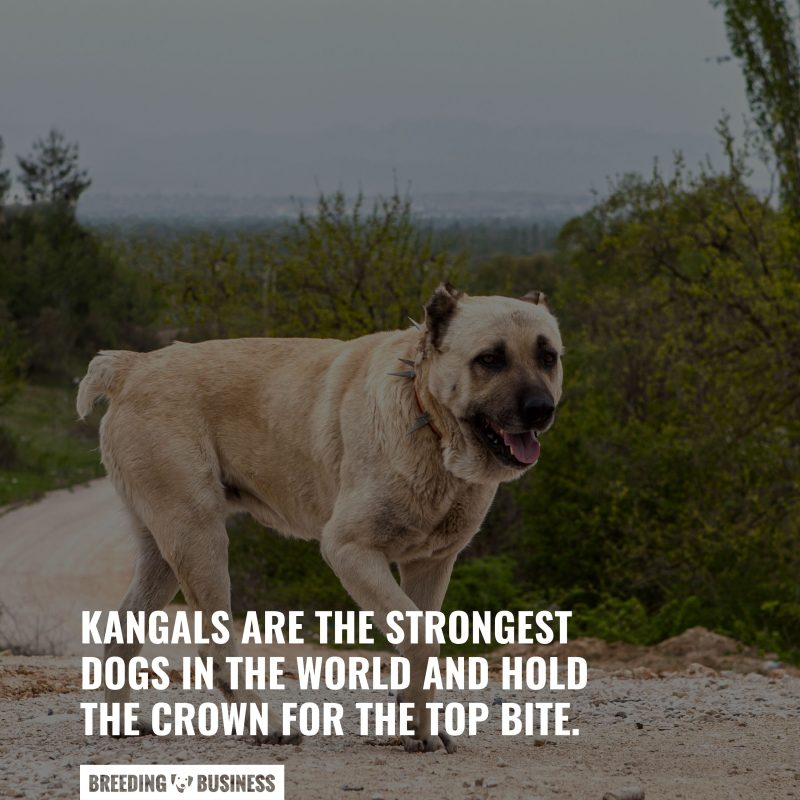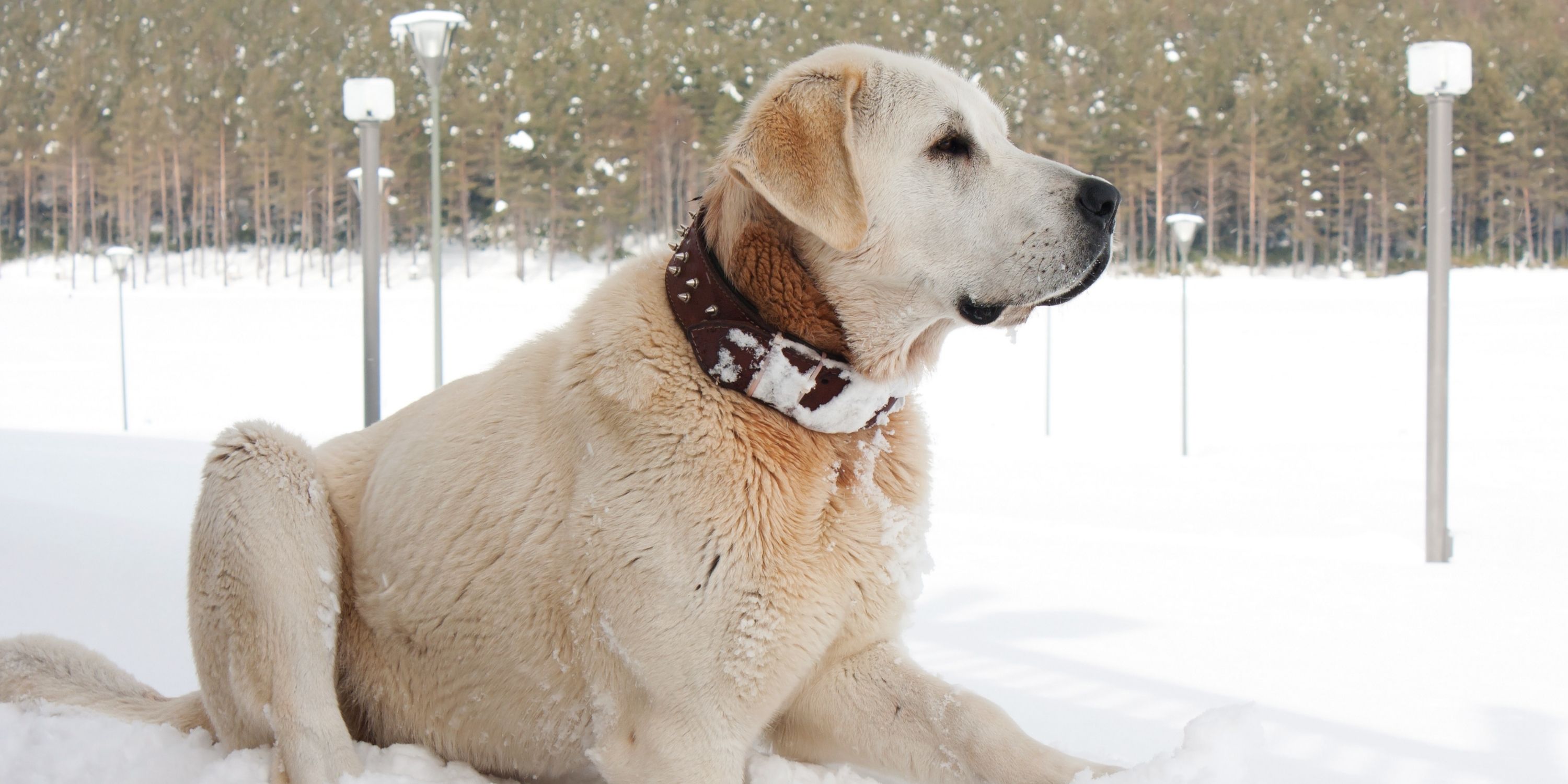Kangals, otherwise known as Anatolian Shepherd dogs are one of the physically strongest dog breeds in the world and are famous for having the world’s strongest bite. These old, courageous watchdogs have a very interesting history.
Keep reading to find out everything you need to know about them as a potential owner, as well as how to breed Kangals for budding breeders.
Background Of Kangal Dog Breeding
Let’s take a quick look at the history of this breed.
Origin of the Kangal
The Kangal dog is an ancient Turkish Mastiff breed, specifically originating in the city of Kangal, in the region of Anatolia in central Turkey. They date back to the 12th century and were originally bred to guard livestock. They were known to be able to kill wolves and even fight off bears.
Kangals are thought to be descended from the extinct Molossus breed of ancient Greece. It is believed that their ancestors came to the region with the Persian invasion of Turkey 1400 years ago.
Their closest relatives are Akbash dogs, which are technically a different breed, although the American Kennel Club recognizes them both as Anatolian Shepherds because of their similar history.
The Modern Kangal
In more recent years, they were exported to Africa to help farmers protect livestock against big cats. Not only has this helped farmers, but it has been significant in preserving endangered species of predators that would otherwise have been shot by farmers.
The breed came to America in the 1960s and was recognized by the American Kennel Club in 1995. Kangals are still used as working dogs in their home country of Turkey and remain a popular breed of dog there. In the US, however, they are kept as beloved pets and currently rank 85 out of 197 breeds for popularity according to the AKC.

Appearance
Kangals are a large breed of dog that have beautiful faces of the typical Mastiff shape. They have triangular, velvety, flopped ears, long snouts, and oval-shaped amber or brown-colored eyes. They are more athletically built than most other dogs their size and have long curled tails.
Size and Weight
The average height and weight of a male Kangal is approximately 28-31 inches and 106-132 lbs, with the average female standing at 25-30 inches and weighing 88-110 lbs.
Coat
Kangals have thick double coats consisting of a dense, insulating, soft undercoat and a short, coarse, weatherproof topcoat. Their fur is straight and sheds heavily twice a year during the transition from spring to summer and fall to winter. For this reason, they are not classed as a hypoallergenic breed.
Their coats are tan-colored and can be light gold, grey-tan, fawn sable, or dun. They usually have black markings on the ears, muzzles, and defined eyebrows.
Personality
Kangals are calm, independent, intelligent dogs due to their working DNA. They are loyal, loving, sensitive, and protective of their families and are particularly gentle with children.
Kangals are absolutely fearless and like to keep watch. They will be vocal to alert you of strangers, but not aggressive unless there is a threat.
Kangals tend to be aloof with strangers until they get to know them but are generally friendly and require plenty of socialization to avoid aggression towards other dogs.
Training
Owners should spend time building a bond before attempting training, but start training as early as possible. Kangals are intelligent and trainable dogs, but they are prone to stubborn behavior because of their independence. This coupled with their size and strength, means that Kangals are not the dogs for novice owners. To avoid stubbornness, keep your training sessions clear, concise, consistent, and fun.
Positive reinforcement should always be the dominant force. The use of a behavioral marker, such as a clicker, will speed up the process. Negative signals like the word “no” should be used consistently with a bad association, like being ignored, to eventually be effective.
Areas of training that Kangal owners should particularly focus on include territorial behavior and socialization. Territorial behaviors can be tackled by practicing recall, rewarding good behavior, and reducing the anxiety of strangers with socialization. Socialization can be done at home and on walks. You should invite close friends and family members over to your home with their dogs, and interact with as many friendly dogs on walks as possible from a young age.
Kangal Care
Kangal puppies need 5 minutes of exercise per month of their age per day. A fully grown Kangal needs around an hour of physical exercise every day, preferably split into two walks. Their exercise routine should lessen gradually as they age. Owners should engage in fun games and provide mentally stimulating toys for their Kangals to avoid boredom. However, mostly, Kangals will feel fulfilled from being involved in family life as much as possible and from being allowed to live out their instinctive role as the watchdog.
A Kangal pup should eat 20g per 1kg of their body weight per day. An adult Kangal should eat around 7 cups of food per day, split into two meals, depending on their age, size, and activity level. Their diet should consist of a high-quality kibble that gives complete nutrition, natural sources of protein to support their large frame, and nutritious, fiber-rich fruits and vegetables. Always avoid low-quality commercial dog foods that contain filler ingredients like grains and additives.
Their coats need brushing once a week with a firm brush to remove loose fur and debris, especially during shedding seasons to keep them cool and comfortable. A de-shedding tool may also be helpful during these times of the year. The breed doesn’t need haircuts or regular baths but they should be cleaned whenever they are dirty from a particularly muddy walk.

Common Health Issues When Breeding Kangals
Kangals have an average lifespan of 10-13 years. They are generally healthy dogs, but all breeds are susceptible to certain conditions. These are the conditions that most commonly affect the breed. The American Kennel Club suggests all young Kangal pups receive veterinary hip and elbow evaluations.
Dysplasia
Hip dysplasia and elbow dysplasia are congenital conditions that are especially likely in large breeds like Kangals. They cause the hip or elbow joints to form abnormally and become loose and shaky over time. It eventually leads to arthritis and there is no cure. However, it can be managed, and an early diagnosis can delay the condition from getting worse.
Mild dysplasia requires lifestyle changes and non-surgical therapies, whilst severe dysplasia will need surgery to fix the joint. Either way, dogs with dysplasia should go on to lead long and happy lives.
The symptoms of dysplasia include:
- Limping or bunny hopping
- Difficulty with activities such as jumping and climbing
- Whining and licking the affected joints
- Loss of muscle mass
- Exercise intolerance
- Low mood, sometimes irritability
- Inability to get comfortable
Entropion
Entropion is a condition in which a dog’s eyelid, usually the lower one, turns inward so that their eyelashes rub against their eye. It can be very uncomfortable and sore. Causes can be breed, weight, or age-related and it can only be corrected with surgery. However, vets can prescribe long-term eye drops to relieve symptoms if you don’t want to put your dog through surgery.
The symptoms of entropion include:
- Weepy eye(s)
- Closing eye(s)
- Red eye(s)
- Rubbing or pawing at the eyes
- Recurring irritation, inflammation, infection, or ulcers
Lipoma
Lipomas are the benign fatty tumors that all dogs get as they age. Whilst they are harmless, they can cause mobility issues, interfere with bodily functions, and cause discomfort if they grow in the wrong places. Kangals are extra prone to developing Lipomas in disruptive places, and the only way to get rid of them is to remove them surgically. There is no way to prevent the tumors.
The symptoms of lipoma include:
- A soft, squishy lump on the body
- Discomfort or bodily disruption (E.g. with swallowing, going to the toilet, or movement)
Breeding Kangals
If you are a first-time breeder, you should make sure that you have the appropriate breeding licenses for your region and that your dogs are free from any breed-specific genetic health conditions.
Litter & Puppyhood
The average size of a Kangal dogs’ litter is 6 puppies. They usually weigh just over one pound at birth and grow to their full, adult size by about a year and a half old. Pups should live on their mothers’ milk for the first month – two months of their lives and be gradually eased onto kibble and milk replacer, and eventually dry kibble by 8 weeks of age.
Common Birthing Problems
Thankfully, pregnancy issues and dystocia or difficult birth are not common in the breed. However, breeders should familiarise themselves with the signs of dystocia in dogs and always keep their vets’ phone numbers on hand just in case.
Cost
The average cost of a Kangal puppy is currently between $800-$2500 in the US, although it can be more. The exact cost will depend on a few different factors. Puppies from large-scale, commercial breeders will usually be cheaper than those from small-time breeders unless they are famous pedigree breeders. However, a higher price usually means that there is a much better quality of care.
The pup’s coat color and lineage can also affect the price. Those bred from show dogs or competitors in dog sports will have a much higher price tag. Dogs with rarer coat colors may also be more costly. Rescue Kangals will cost the shelter’s adoption fee – which could be anywhere from fifty to a few hundred dollars.
The average annual cost of looking after an adult Kangal is approximately $1140 per year. This is split into around $485 for health care and insurance, $400 for food and treats, and $255 for toys and accessories like bowls and collars. This will likely be more expensive in their first year, as teething pups tend to go through more supplies on top of the usual costs and initial vet visits. Medical costs also tend to increase as dogs get older.
How To Breed Kangals: FAQ
Kangals can be great family dogs and love to be involved in all aspects of family life, providing they receive proper training and early socialization to avoid overly territorial behavior.
They also have an affinity with children, however, all children should be taught how to approach and interact with dogs properly for the sake of both the dog and the child.
Gentleness and kindness are key, so no teasing, shouting, or pulling on whiskers or tails. Children should also be taught to always let unfamiliar dogs come to them and never to approach unfamiliar dogs when they are eating.
Kangals are one of the physically strongest dogs in the world. They also have the strongest bite of any dog breed on the planet and can take on many large, fierce wild predators.
Kangals can take on wolves, bears, and even big cats. They are absolutely fearless dogs that back down to no one. Working Kangals will protect their flocks from anything, and companion Kangals will do the same for their loved ones.
Kangals are dangerous to anybody that is posing a threat to them, their property, or their family. Otherwise, they are calm, level-headed dogs by nature.
Kangals are banned in Ukraine, Denmark, and Belarus as they can be dangerous if they are mishandled or threatened.
Kangals are fearless watchdogs with a lengthy history and the potential to be great family dogs. If you’re looking to own a Kangal, you should be armed with training knowledge and experience. Always breed ethically and responsibly and always buy from highly-rated breeders, or adopt from a shelter.

One comment on “How To Breed Kangal Dogs”
Are kangal dogs dangerous for child ?